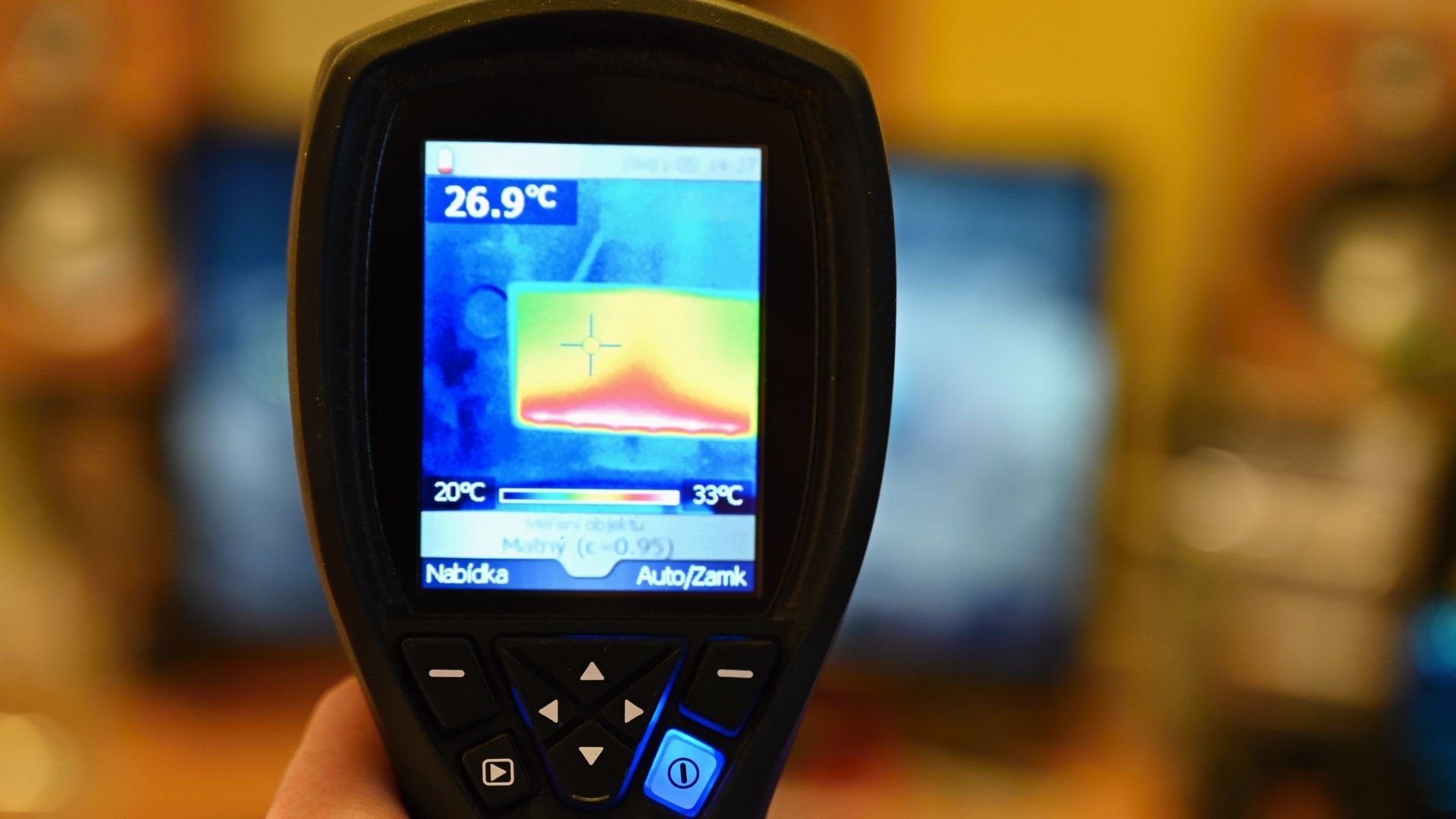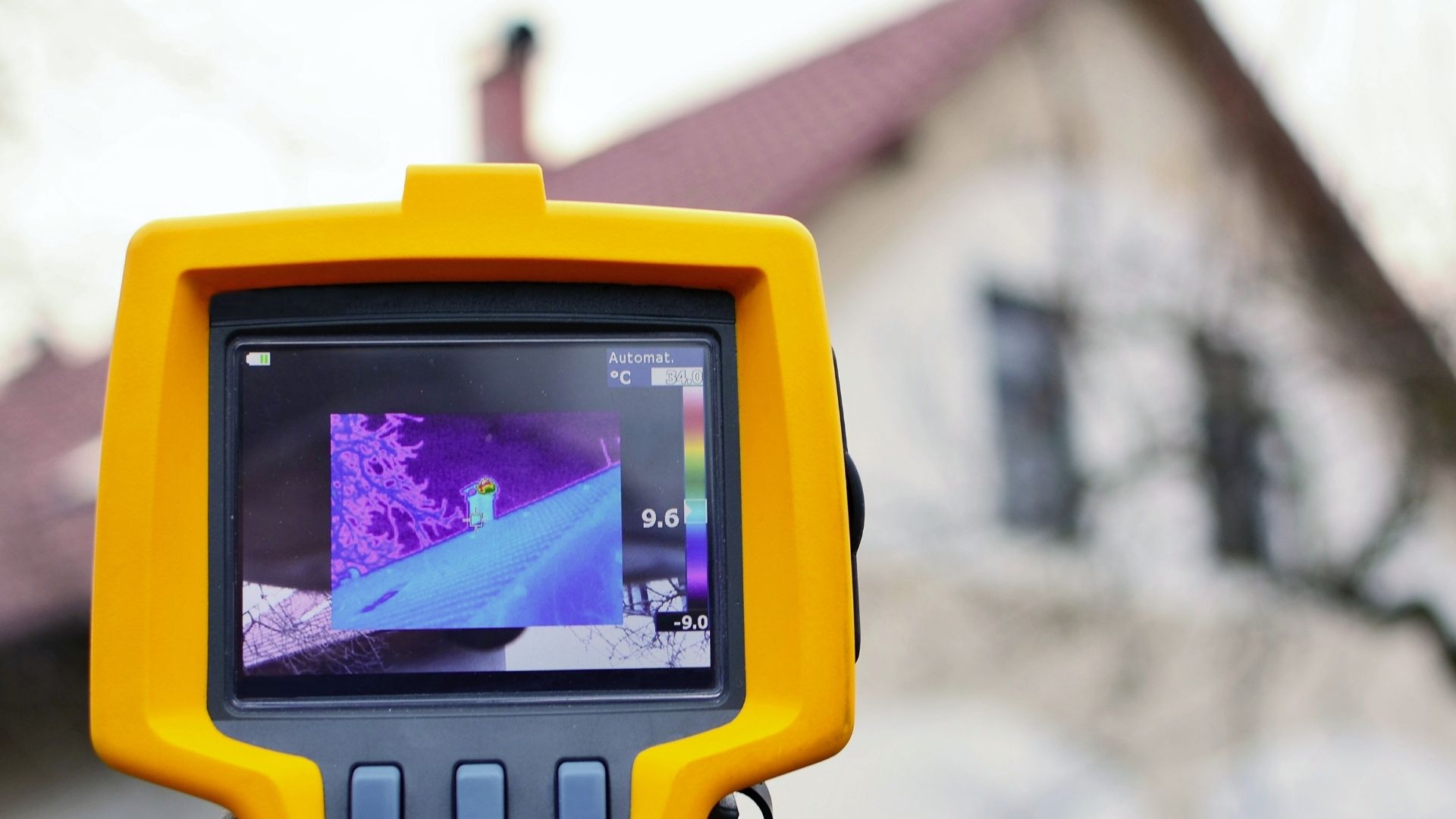In 2023 alone, industrial facilities lost an estimated $27 billion due to undetected pipe leaks, with the average leak remaining undiscovered for 7 months. Beyond the immediate financial impact, these hidden failures silently drain resources, compromise safety, and contribute to environmental degradation.
Industries struggle to maintain extensive pipe networks. Traditional inspection methods often involve shutting down systems, accessing risky areas, and performing tedious manual checks.

When leaks occur in hard-to-reach locations or within insulated piping, they can persist unnoticed until significant damage has already occurred. The consequences cascade beyond repair costs—production delays, compliance violations, and environmental incidents can severely impact a facility’s bottom line and reputation.
Thermal imaging technology has emerged as a revolutionary solution to these persistent challenges. Temperature variations detected through thermal imaging cameras indicate leaks, blockages, or insulation failures, enabling maintenance teams to identify problems before they escalate into significant shortcomings.
This noninvasive method lets industries monitor systems in real time without interruptions, changing the way they handle system integrity and preventive maintenance.
Understanding Thermal Imaging Technology
Advanced detection methods have revolutionised industrial maintenance, with thermal imaging transforming leak detection practices.
What is Thermal Imaging?
Thermal imaging represents a sophisticated technique that captures infrared radiation through specialised cameras. These devices create detailed industrial equipment heat maps, revealing invisible temperature patterns to the naked eye. The technology translates thermal energy into visible images, displaying warmer areas in brighter colours and cooler regions in darker shades.
How It Works
This process hinges on measuring infrared emissions from surfaces. Pipe leaks show distinct temperature differences, appearing as colour variations on the thermal display. For instance, steam from a valve might glow bright against a cooler backdrop, while water leaks typically show as dark spots due to evaporative cooling.
Why It Suits Industrial Applications
The non-contact nature of thermal imaging makes it invaluable for industrial settings. Maintenance teams can safely inspect overhead steam lines from ground level or examine underground pipes through surface temperature changes.
The technology proves essential in hazardous zones where traditional inspection methods pose significant risks, such as high-voltage areas or chemical processing facilities. Thermal cameras can detect issues in furnace refractory linings, electrical switchgear, and high-pressure steam systems without requiring system shutdown or direct access.
The Traditional Challenges of Pipe Leak Detection
Historical approaches to leak detection present significant obstacles in modern industrial environments, hampering efficiency and reliability.
Visual Inspection Difficulties
Manual inspection methods often only identify microscopic leaks once substantial damage occurs. Standard visual checks must be revised to detect issues within insulated or underground piping systems. Sound-based detection techniques struggle with background noise interference, while small seepages remain undetectable through conventional sight and sound approaches.
Time and Labour Intensive Methods
Traditional detection requires extensive personnel deployment across vast industrial complexes. Teams must systematically examine each pipe section, joint, and valve, consuming valuable maintenance hours. The process demands repeated inspections at regular intervals, regardless of system condition, resulting in inefficient resource allocation.
High Costs and Risk of Damage
Conventional leak detection methods frequently necessitate system shutdowns, impacting production schedules and revenue. Intrusive testing procedures might require removing insulation, digging up buried pipes, or dismantling equipment.
These interventions risk creating new problems while attempting to locate existing ones. The financial impact extends beyond immediate repair costs, including operational disruptions and potential equipment damage from invasive inspection techniques.
Benefits of Thermal Imaging for Industrial Pipe Leak Detection
Modern thermal imaging technology delivers multiple advantages that transform industrial maintenance practices, offering solutions to longstanding challenges.
Early Leak Detection
Thermal cameras identify minute temperature variations indicative of developing leaks. These subtle changes, invisible to conventional methods, signal potential issues weeks or months before visible signs appear.
The technology detects irregularities in pipe walls, insulation gaps, and fluid flow patterns, enabling maintenance teams to address problems at their earliest stages and prevent catastrophic failures.
Non-Invasive Approach
Thermal imaging equipment operates without physical contact, preserving the structural integrity of industrial systems. Maintenance staff can examine complex pipe networks through insulation, walls, and underground locations without dismantling components or disrupting operations.
This approach eliminates the risks associated with traditional intrusive inspection methods while maintaining the protective coatings and insulation critical to system performance.
Increased Efficiency in Detection
Recent industry studies reveal that thermal imaging reduces inspection times from days to hours. A 2023 analysis of Australian manufacturing facilities showedan 85% reduction in leak detection hourscompared to traditional methods. The technology allows a single technician to survey extensive pipe networks in one shift, replacing teams of inspectors and significantly decreasing labour costs.
Reduced Environmental Impact
Quick leak identification through thermal imaging prevents substantial resource losses. Water utilities implementing this technology report up to 60% reduction in water waste from distribution networks. Chemical processing facilities use thermal imaging to protect local ecosystems from hazardous material releases, while oil and gas operators prevent costly product losses and environmental contamination.
Applications of Thermal Imaging in Various Industries

- Oil and Gas Sector: Explain how thermal imaging helps identify leaks in oil pipelines, prevent spills, and ensure worker safety. Reference specific risks, such as those related to flammable materials.
- Water Supply and Waste Management: Discuss its application in detecting leaks in water supply networks, which can help conserve water and prevent structural damage caused by underground leaks.
- Chemical and Pharmaceutical Industries: Describe how thermal imaging is crucial for detecting leaks in chemical processing plants, where escaping gases or liquids can pose serious health risks.
- Power Plants: Detail thermal imaging in power plants to monitor the integrity of steam lines and coolant systems, preventing unplanned shutdowns and ensuring operational reliability.
Equipment and Techniques
The effectiveness of thermal imaging depends on selecting appropriate equipment and implementing proper methodologies alongside skilled expertise.
Thermal Cameras
Industrial thermal cameras range from compact handheld units to sophisticated drone-mounted systems. Handheld devices offer precise control for detailed inspections of accessible areas and feature adjustable focus and temperature measurement capabilities.
Drone-mounted thermal cameras excel at surveying elevated pipelines, cooling towers, and extensive industrial complexes, providing comprehensive aerial thermal mapping of entire facilities.
Techniques for Enhanced Accuracy
Continuous monitoring systems integrate fixed thermal cameras at critical points, delivering real-time temperature data to central control rooms. Periodic inspection protocols involve systematic facility surveys at predetermined intervals, creating baseline thermal profiles for comparison.
Drone-based thermal inspection techniques enable rapid assessment of large areas, incorporating GPS mapping and automated flight paths to ensure consistent coverage of industrial infrastructure.
Training and Expertise Required
Professional certification in thermal imaging interpretation proves essential for accurate diagnostics. Technicians must understand heat transfer principles, equipment calibration, and environmental factors affecting thermal readings.
Training programmes cover image analysis software, reporting protocols, and maintenance recommendation procedures. Expert operators can distinguish between normal temperature variations and genuine leak indicators, preventing false positives and ensuring reliable problem identification.
Best Practices for Implementing Thermal Imaging in Industrial Environments
Success in thermal imaging implementation requires strategic planning and adherence to essential operational guidelines.
- Establish Systematic Inspection Protocols: Regular thermal imaging surveys should follow a structured schedule based on critical equipment priorities. Each inspection must document baseline temperatures, allowing comparison over time. The maintenance team should integrate these surveys into the broader predictive maintenance strategy, scheduling thorough scans during peak operational periods.
- Invest in Comprehensive Training: Technical staff require professional thermography principles and interpretation certification. Training programmes should cover equipment operation, image analysis, and environmental factor considerations. Personnel must understand heat transfer mechanisms, material emissivity, and reflection patterns to deliver accurate diagnostics.
- Maintain Equipment Excellence: Industrial facilities should acquire thermal cameras with appropriate resolution and temperature range specifications for their specific applications. Regular calibration ensures measurement accuracy, while proper storage protects sensitive components. Professional-grade equipment offers superior image quality and detailed temperature data for precise leak detection.
- Document and Track Historical Data: Maintenance teams should create detailed records of all thermal inspections, including images, temperature readings, and environmental conditions. This database enables trend analysis and helps predict potential failure points. Historical documentation supports maintenance planning and validates the effectiveness of corrective actions.
- Develop Clear Response Procedures: Organisations must establish specific action protocols for different types of thermal anomalies. These procedures should outline immediate response requirements, reporting chains, and repair prioritisation criteria. Emergency response plans should address critical leaks that pose safety or environmental risks.
Choosing a Thermal Imaging Partner for Industrial Leak Detection
Choosing the right thermal imaging service provider is crucial for effective leak detection.
- Evaluating Expertise: Professional thermal imaging partners should demonstrate extensive industrial experience through documented case studies and client testimonials. The provider’s portfolio must showcase successful leak detection across various industrial settings. Their team should possess comprehensive knowledge of different piping systems, industrial processes, and common failure points. Previous work in similar industrial sectors indicates an understanding of industry challenges and requirements.
- Importance of Certification and Equipment: Quality service providers maintain their current thermography certifications from recognised institutions. Their technicians should hold Level II or III infrared certification, ensuring advanced interpretation capabilities. The partner must utilise modern thermal imaging equipment with appropriate sensitivity ranges and resolution for industrial applications. Professional-grade cameras, analysis software, and reporting tools guarantee accurate diagnostic results.
- Service Flexibility: Industrial thermal imaging partners should offer customised service schedules aligned with facility operations. Theiremergency response capabilitiesmust include 24-hour availability and rapid deployment options. The provider should be willing to conduct surveys during planned shutdowns or off-peak hours. Flexible service arrangements accommodate varying production schedules while ensuring minimal operational disruption.
The Future of Thermal Imaging in Leak Detection
The evolution of thermal imaging technology promises enhanced capabilities and broader applications across industrial sectors.
Technological Advancements
Machine learning algorithms integrated with thermal imaging systems will automate leak detection processes. Advanced software solutions will analyse temperature patterns instantly, predicting potential failures before they occur. Smart sensors coupled with thermal cameras will create comprehensive monitoring networks, delivering real-time insights to maintenance teams.
Wider Industry Adoption
Agricultural facilities increasingly implement thermal imaging to monitor irrigation systems and prevent water waste. Commercial buildings incorporate these systems into their infrastructure management programmes. The technology’s decreasing cost enables smaller manufacturers to access previously unaffordable detection capabilities.
Mining operations adapt thermal imaging for conveyor systems and processing equipment, while pharmaceutical manufacturers ensure sterile pipe network integrity through regular thermal surveys.
Take Control of Pipe Leak Detection Today
Protecting industrial assets through proactive leak detection represents a critical investment in operational sustainability and safety. Modern thermal imaging technology offers robust solutions to age-old maintenance challenges, transforming how industries approach system integrity.
Big Blue Plumbing leads the Australian industry in advanced thermal imaging solutions. Our certified technicians deliver comprehensive leak detection services using state-of-the-art equipment and proven methodologies. The team specialises in customised inspection programmes for manufacturing facilities, processing plants, and industrial complexes.
Take the first step toward enhanced leak detection. Contact Big Blue Plumbing to schedule a thermal imaging consultation. Our experts will assess your facility’s needs and develop a tailored solution that protects your assets and optimises operational efficiency. Call 07 5404 9354 today or visit our website to discover how thermal imaging technology can transform your maintenance strategy.



